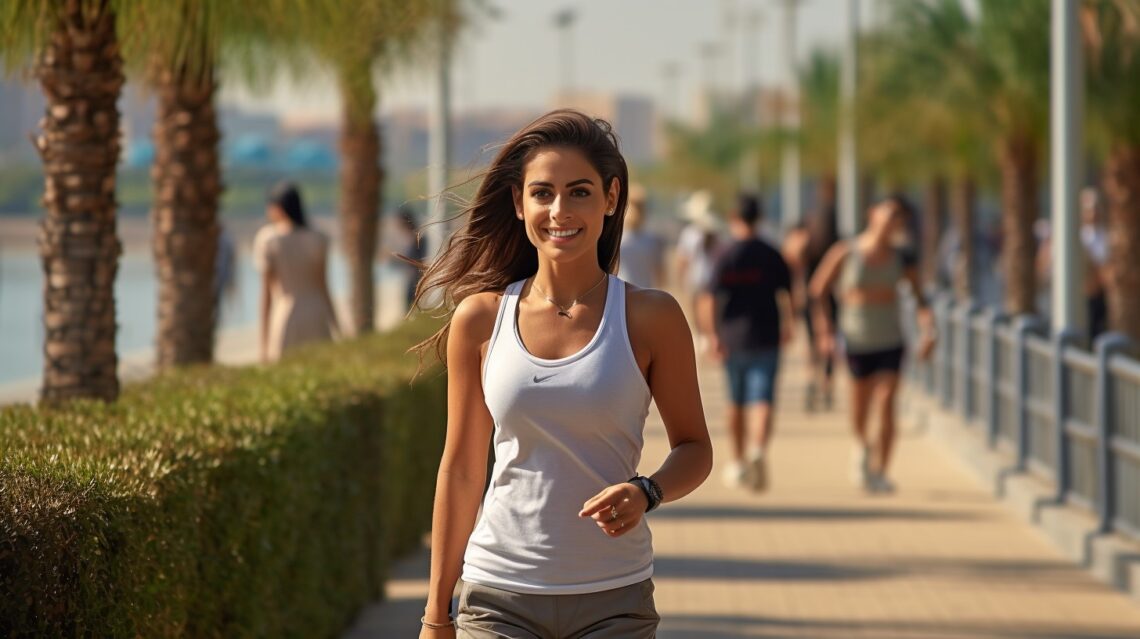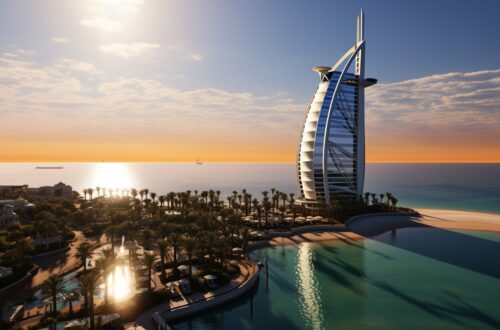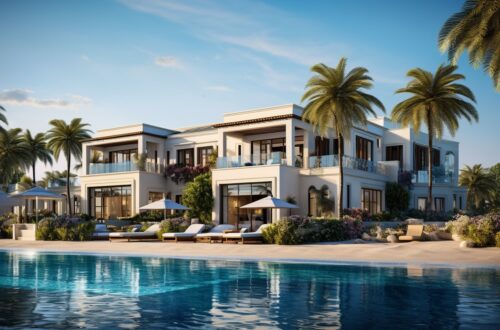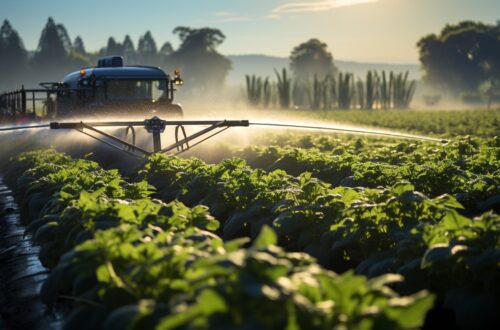Introduction to Sustainability in Dubai’s Real Estate
Dubai’s real estate sector is transforming, driven by a commitment to sustainability and combating climate change. In a city where temperatures can soar, and resources are scarce, sustainable practices in real estate aren’t just a luxury; they’re a necessity. The government of Dubai has been proactive in implementing measures to reduce the environmental impact of its buildings, recognizing that the real estate sector plays a crucial role in addressing climate change. From green building standards to energy-efficient designs, Dubai is redefining what it means to develop sustainably in a desert environment.
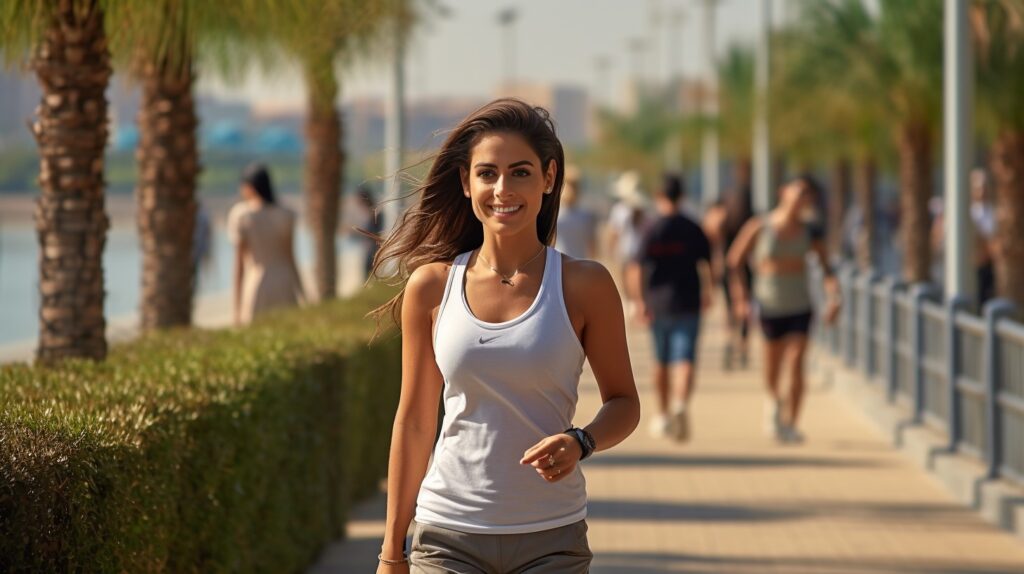
Green Building Standards and Regulations
Implementation of Green Building Codes in Dubai
Dubai has implemented stringent green building codes that set benchmarks for sustainability in construction. These codes mandate the use of energy-efficient materials, the incorporation of renewable energy sources, and the adoption of water-saving technologies in new buildings. For instance, the Dubai Municipality’s Green Building Regulations and Specifications, introduced in 2014, require new buildings to use insulation systems to reduce energy consumption and solar water heating systems to reduce the reliance on electricity and gas.
Impact of Regulations on New Developments
The impact of these green building codes is evident in Dubai’s newer developments. Buildings are designed with sustainability at their core, featuring systems for greywater recycling, energy-efficient lighting, and intelligent HVAC systems that significantly reduce energy and water consumption. The ripple effect of these regulations is a substantial reduction in the carbon footprint of new buildings, contributing to a greener, more sustainable Dubai.
Innovative Sustainable Projects in Dubai
Dubai’s commitment to sustainable real estate is showcased in several landmark projects. These developments are architectural marvels and exemplify the city’s dedication to environmental sustainability.
Case Study: The Sustainable City Development
One of the standout examples of sustainable development in Dubai is The Sustainable City. This pioneering project is a self-contained eco-friendly community with passive and active solar design, biodome greenhouses, and waste recycling. The community is designed to have zero net energy, producing as much energy as it consumes, primarily through solar panels installed on every house and building.
Residents of The Sustainable City enjoy various amenities that promote sustainable living, including electric buggies for transport, organic food markets, and green educational facilities. Tourists can visit this unique community to see sustainable living, from green spaces to innovative waste management systems. More information about tours and visiting hours can be found on the official website of The Sustainable City.
Case Study: Masdar City’s Influence on Dubai’s Sustainability
Although located in Abu Dhabi, Masdar City has significantly influenced Dubai’s sustainable real estate practices. This planned city is a hub for clean-tech companies and sustainable urban development. Masdar City’s design reduces energy and water consumption and combines traditional Arabic architectural techniques with modern technology. The city’s pedestrian-friendly design and transportation system of electric vehicles set a benchmark for sustainable urban planning.
As a tourist, a visit to Masdar City offers a glimpse into the future of sustainable urban living. The city’s innovative design and cutting-edge technology showcase what is possible when sustainability is prioritized in urban development.
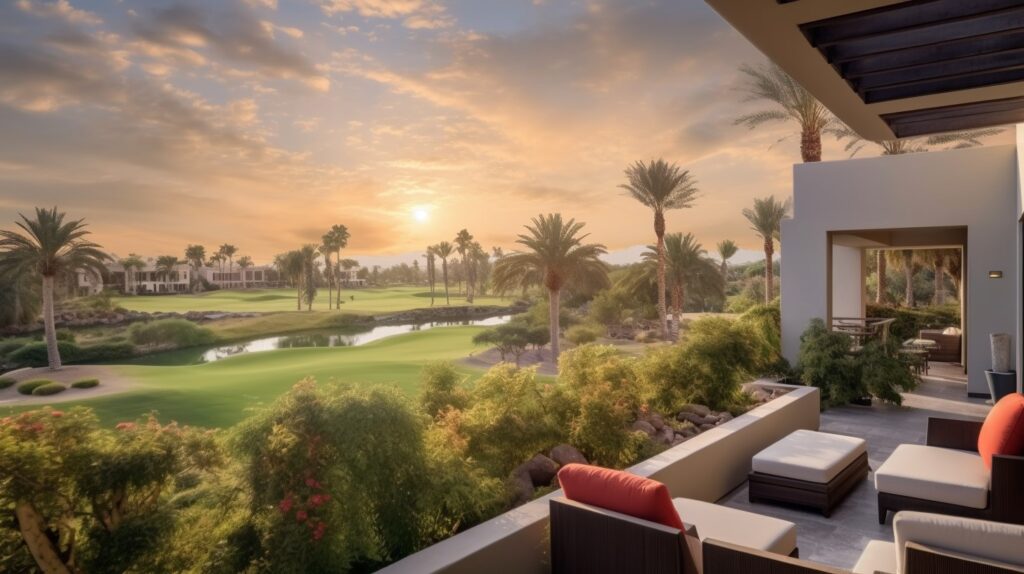
Energy Efficiency and Renewable Energy Integration
In the face of rising temperatures and the urgent need to reduce carbon emissions, Dubai has focused on energy efficiency and integrating renewable energy in its real estate sector. This shift is a response to the global climate crisis and a strategic move to ensure the city’s sustainability and energy security.
Use of Solar Energy in Real Estate Development
Solar energy, abundant in the region, plays a central role in Dubai’s sustainable real estate strategy. The city’s rooftops are increasingly adorned with solar panels, harnessing the sun’s power to meet energy needs. The Dubai Clean Energy Strategy 2050 aims to transform Dubai into a global clean energy center and green economy. It aims to generate 75% of Dubai’s total power output from clean energy by 2050.
One of the flagship projects in this endeavor is the Mohammed bin Rashid Al Maktoum Solar Park, one of the world’s most significant renewable energy projects. This solar park is expected to produce thousands of megawatts of solar power, significantly reducing the city’s reliance on fossil fuels. For tourists, visiting the solar park offers a unique insight into Dubai’s renewable energy ambitions. The park represents a concrete step towards a sustainable future, showcasing the potential of renewable energy in urban development.
Innovations in Energy-Efficient Building Designs
Energy-efficient building designs are another cornerstone of Dubai’s sustainable real estate development. Architects and engineers in Dubai are increasingly employing innovative design techniques to reduce energy consumption. These include thermal insulation, energy-efficient windows, and intelligent building systems that adjust lighting and temperature based on occupancy and time of day.
Adopting green building standards, such as the LEED (Leadership in Energy and Environmental Design) certification, is becoming increasingly common in Dubai. Buildings that meet these standards consume less energy and water, reducing their environmental impact and offering cost savings in the long run. For instance, the Dubai International Financial Centre (DIFC) has several LEED-certified buildings, reflecting the city’s commitment to sustainable development.
Water Conservation Techniques in Construction
Water conservation is critical to sustainable development, especially in a desert city like Dubai, where water resources are scarce. The real estate sector in Dubai has been proactive in adopting water conservation techniques in the construction and operation phases.
Strategies for Water Management and Recycling in Buildings
Dubai’s green building regulations mandate using water-efficient fixtures and irrigation systems. Many new developments now incorporate greywater recycling systems, which reuse water from showers and sinks for landscaping and flushing toilets. This approach significantly reduces the demand for fresh water and contributes to the city’s conservation efforts.
Moreover, innovative landscaping and irrigation practices in Dubai’s real estate developments play a significant role in water conservation. Drip irrigation systems, which deliver water directly to the roots of plants, are widely used in both residential and commercial properties. These systems minimize water waste and are particularly effective in the arid climate of Dubai.
Landscaping and Irrigation Practices for Water Conservation
The choice of plant species in landscaping is also an essential consideration in water conservation. Many developments in Dubai now opt for native or drought-tolerant plants that require less water. This not only conserves water but also helps to maintain the local biodiversity.
An excellent example of sustainable landscaping is seen in Al Barari, a luxury residential development in Dubai. Al Barari’s lush landscapes are maintained using environmentally responsible methods, including recycled water and carefully selected plant species that thrive in the local climate. Visitors to Al Barari are treated to a stunning array of greenery, water features, and wildlife, all sustained through sustainable practices.
In conclusion, the energy efficiency, renewable energy integration, and water conservation techniques employed in Dubai’s real estate sector are critical components of the city’s response to climate change. These initiatives demonstrate Dubai’s commitment to sustainability and set a benchmark for urban development worldwide. As a tourist or a resident, witnessing these sustainable practices offers a glimpse into the future of urban living, where environmental responsibility and innovation go hand in hand. The following sections of this article will explore the broader context of sustainable urban planning and design in Dubai and the challenges and future directions in this dynamic city’s journey towards sustainability.
Sustainable Urban Planning and Design
In Dubai, sustainable urban planning and design are about creating environmentally responsible spaces that are conducive to its residents’ well-being. This involves integrating green spaces, promoting eco-friendly transportation, and designing urban layouts that reduce the carbon footprint and enhance the quality of life.
Integrating Green Spaces and Eco-Friendly Transportation
Dubai’s urban landscape is being transformed by integrating green spaces such as parks, gardens, and corridors. These areas are vital for enhancing urban biodiversity and providing residents with recreational areas but also play a crucial role in mitigating the urban heat island effect, a common issue in densely built cities. For example, Safa Park, one of Dubai’s oldest and most popular parks, offers a green oasis in the city’s heart, with extensive lawns, a lake, and several sports facilities.
Alongside green spaces, Dubai is emphasizing eco-friendly transportation options. The expansion of the Dubai Metro, the introduction of electric buses, and the development of pedestrian-friendly pathways are part of the city’s strategy to reduce reliance on cars. These initiatives contribute to lowering emissions and improving air quality while encouraging a healthier lifestyle among residents.
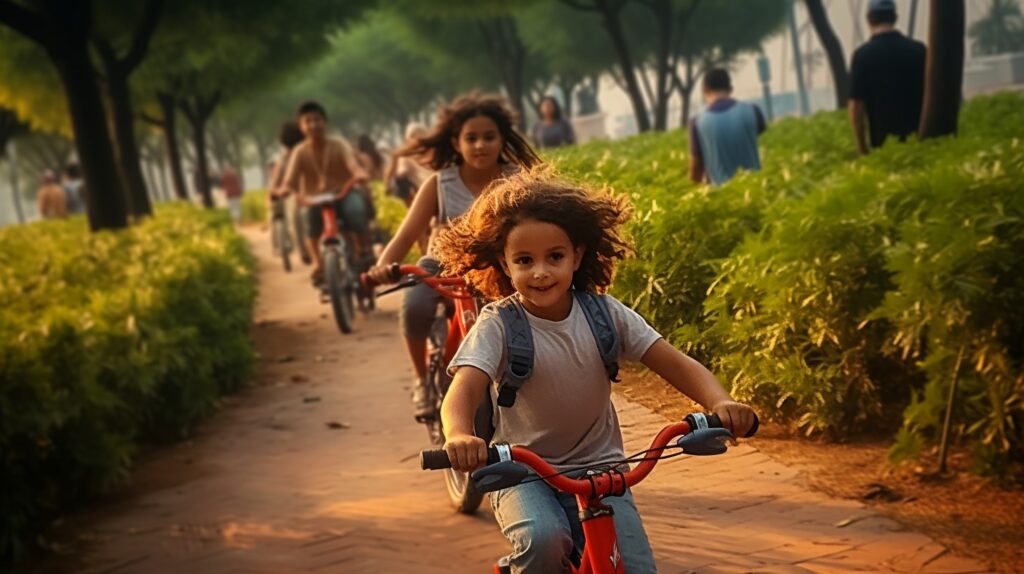
Promoting Walkability and Reduced Carbon Footprint in Urban Design
Dubai also focuses on creating walkable neighborhoods that reduce the need for car travel and, consequently, carbon emissions. Areas such as Downtown Dubai and the City Walk are designed to be pedestrian-friendly, with easy access to shops, restaurants, and entertainment options. These areas blend high-density living with convenience and accessibility, reducing the environmental impact of transportation and improving the overall urban experience.
Challenges and Future Directions
Despite its ambitious initiatives, Dubai needs help pursuing sustainable real estate development. Balancing rapid development with sustainability goals and adapting to the global trends in sustainable real estate are critical focus areas for the city.
Balancing Rapid Development with Sustainability Goals
One of the primary challenges Dubai faces is maintaining its rapid pace of development while adhering to sustainability goals. The city’s skyline is ever-changing, with new developments constantly underway. Ensuring these projects adhere to green building standards and contribute to the city’s sustainability objectives is complex. Additionally, managing the energy and water demands of such a rapidly growing urban population without compromising environmental goals is a significant challenge.
Anticipating Future Trends in Sustainable Real Estate
Looking ahead, Dubai is poised to continue its journey towards becoming a global leader in sustainable real estate. The city is likely to witness an increased integration of innovative technologies in buildings, further advancements in renewable energy, and innovative solutions in water conservation. Adopting new materials and construction techniques that reduce the environmental impact of buildings is also expected to grow.
Furthermore, as global awareness of climate change increases, Dubai’s real estate sector may see a shift towards developments that meet sustainability standards and contribute positively to the environment. This could include buildings that produce more energy than they consume, developments incorporating urban farming, and projects that actively enhance local biodiversity.
In conclusion, Dubai’s approach to sustainable real estate is a dynamic and evolving journey. The city’s initiatives in green building, sustainable urban planning, and eco-friendly transportation, coupled with its response to the challenges and future trends in sustainability, showcase its commitment to creating a city that is not only architecturally impressive but also environmentally responsible. As a visitor or resident in Dubai, witnessing this transformation offers a unique insight into the future of urban living – one that harmoniously blends development with sustainability.
